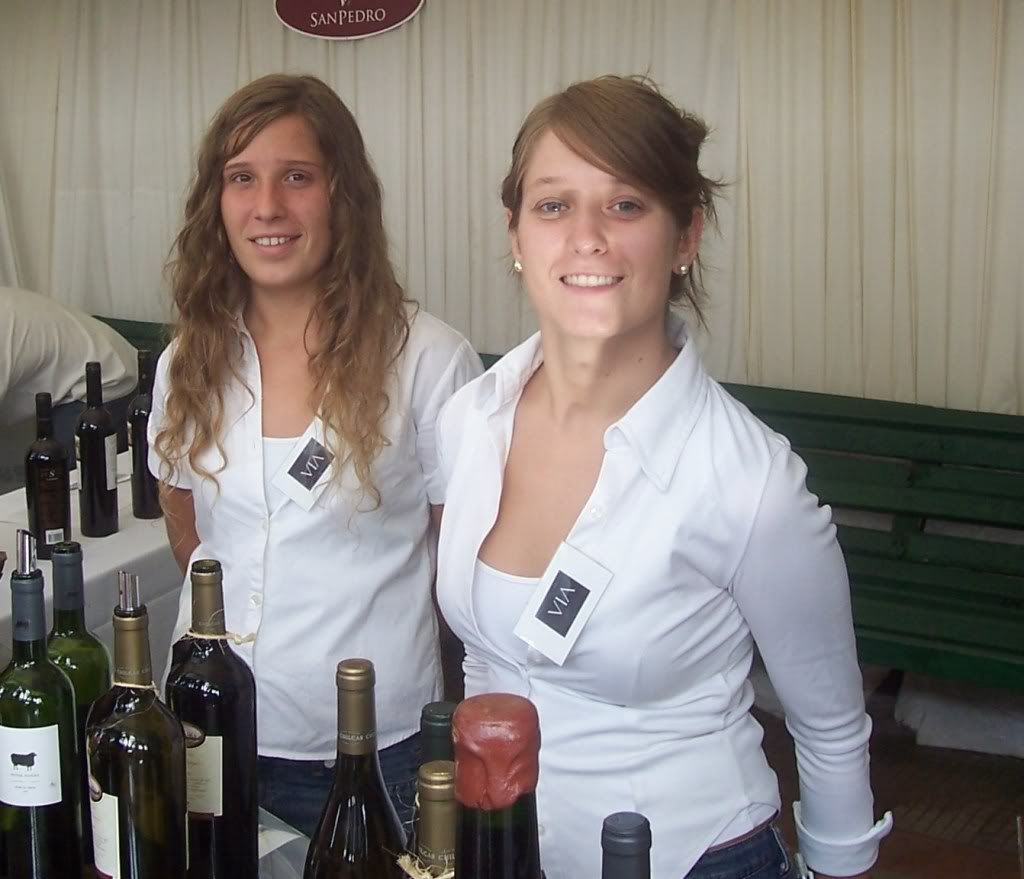This morning it was 21 degrees. I need to wait for a few more weeks of cold weather before I start the winter vineyard pruning. I have to prune 120 vines at Rosewood Hill Vineyard, 330 vines at Castleton Lakes Vineyard, and then I am going to help Bill Gadino prune several thousand vines at Gadino Cellars. So today I am looking back to when I planted Rosewood Hill vineyard almost 7 years ago.
Spring 2003
Last weekend two friends came to the farm to help me plant grape vines. I had carefully planned to plant grape vines one weekend, walnut trees the weekend after that, and then
The idea was I would start with a small hobby vineyard and then when I got some experience plant a commercial one. I have since learned that I can make more money farming wine grapes for someone else. Large vineyards and small wineries are profitable but a small vineyard usually is not. In
My 65 acre farm has a couple of sites well-suited to growing grapes. Here in
The top part of my farm rises to 1,000 feet while at the bottom it is 565 feet elevation. I am grateful to Steve Critzer who talked me out of clearing off a vineyard site high up on the mountain where I had planned a commercial vineyard. He had already brought his bulldozer to the farm when we cancelled this job. The 15 degree slope up there would have been financially ruinous to work not to mention dangerous in the case of a tractor rollover. There are so many rocks up there I would have had to haul dirt up from the bottom or from construction sites. And in a drought vineyards need water, especially young vineyards. To have piped water up that hill would have cost thousands. And a vineyard surrounded by several thousand acres of uninhabited forest would have been devastated by deer, turkey, bear, birds, raccoon, in short every kind of predator. It would have been better to place such a vineyard in a frost pocket in some suburb in
Any farm is an ongoing operation which each year requires some capital improvements. At that time I had neither tractor nor auger so the only way to plant these vines was by hand. The soil in
In
The grafted rootstock arrived in a UPS-delivered box from American and Lake County Grapevine Nursery. The owner, Joachim Hollerith. lives most of the year here in
The vines I had selected to plant were cabernet franc on 3309 rootstock, traminette on 3309, and viognier on 101-14. I didn’t know much about rootstock at the time so Joachim picked them for me. I had picked cabernet franc because it does well here in
The way you plant grape vines is you dig a hole about 2 feet deep taking care to dig out all the rocks and then you position the plant where the graft union is a few inches above the soil. One hapless farmer in
I takes much labor to plant 120 grape vines in one day especially when you are doing this by hand. I should have hired some hard-working migrant workers to help me but I resolved to do this work myself. So my friend Paul and I dug holes all day long while my girlfriend passed us vines while Paul’s 3 year old son played around the newly-erected trellises. Paul was overweight while I was merely out of shape. He worked as hard or harder than me in the heat and I worried he would fall over with a heart attack. Some holes were fairly easy to dig while in others we found rock or even hard-pan (i.e. impenetrable subsoil) that I hacked at with a heavy pike. We planted 105 vines in one day leaving me 15 to plant the next. I tossed them into the refrigerator with the walnut trees and reviewed my vineyard budget.
If you look at my actual expenses (graphic at the top of this posting, click on it so you can easily read it) for the first two year of my vineyard—not including the winemaking equipment I bought---you can get an idea of what is in store for you were you to decide to plant your own vines. I spent $3,500 not including the chemicals I bought to spray the vineyard, the lime, the fertilizer, and other stuff I did not include in my budget.
If you are a hobbyist contemplating a backyard vineyard I would say, “Don’t do it”. My work was the result of many years of going to seminars, working at vineyards in
Looking at some of my purchases the first year you can see that I started with the most fundamental: grape vines. These were $2.95 apiece while currently ENTAV certified vines cost $3.95. You need to buy grape vines from a reputable nursery because you don’t want them to arrive already infected with leaf roll virus or other problems.
If you plan to put in a vineyard plan on buying lots of trellis wire and pressure-treated posts. Take my advice and invest in a wire jenny. You use this to hold the wire so you can unroll it in an orderly fashion. When I cut the bands from the first of these very heavy rolls of wire it opened up line an accordion and tangled. I spent countless hours cursing as I untangled this mess one misery foot at a time. Had I to do it all over again I would have tossed out that wire and simply bought the wire jenny. But even the landfill would not take this wire saying it would foul their equipment.
Any vineyard in
Vineyards in
I also bought a German-built gasoline-powered backpack sprayer. In
The rest of the items listed below are other equipment needed to build the trellis and prune the vines. I have not included the cost of any fertilizer but in the acidic soils of
The sun is coming up here now on this frosty morning so I have to go outside and break the ice from the goats watering pale and give them a bale of hay to eat. I am driving off the farm today so I won’t turn them loose into the forest. Fortunately they have not bothered the vineyard yet but I have thought that setting sheep lose there would be a good idea to keep the weeds and grass under control under the vines. You can’t do that with goats because they will stand on their hind legs to devour anything they can reach.









No comments:
Post a Comment